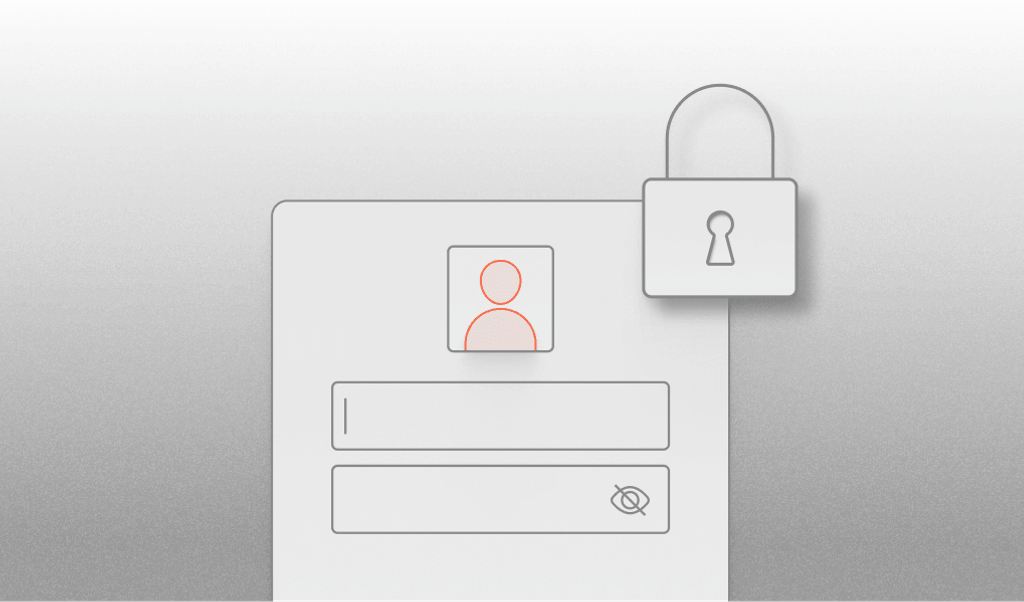
Summarize this article with
Peer-to-peer lending transforms traditional finance by connecting lenders and borrowers directly, removing intermediaries. This model's growth highlights an increasing preference for more personalized, accessible financial services. However, the cornerstone of its success lies in establishing trust between parties.
Credit checks and reviewing personal financial data are usual methods to evaluate this trust. However, we can find additional trust indicators in how users access a peer lending platform. We can use these indicators to assess risk before a user even enters any information.
This article will look at a technical approach to assessing borrower trustworthiness in peer-to-peer lending. Specifically, we'll see what the user's browser can tell us, how these signals can help to identify potentially suspicious actors, and how platforms can use them for more secure lending practices.
What is Peer-to-Peer Lending?
Peer-to-peer (P2P) lending is a method of debt financing that allows individuals or businesses to borrow and lend money directly from each other without using an official financial institution as an intermediary. P2P lending platforms facilitate this financing by matching borrowers with potential lenders.
Examples of P2P Lending Platforms
Some of the most popular P2P lending platforms include Prosper, Kiva, and Upstart. Prosper is known for its low credit requirements, making it accessible to many borrowers. The platform uses a proprietary rating system to assign loan interest rates. Kiva stands out with its focus on providing low-interest and interest-free microloans to entrepreneurs and small businesses in low- and middle-income countries. Lenders on Kiva are driven by a desire to support economic development and entrepreneurship. Upstart is popular among lenders because it uses non-traditional variables, such as education and employment history, to determine creditworthiness.
Benefits of P2P Lending Platforms
The reasons people participate in P2P lending vary. For borrowers, it often provides access to funds that might not be available through traditional banks, often due to stricter lending criteria or terms. Borrowers may also prefer P2P lending for its typically faster, more streamlined application process and the potential for lower interest rates.
On the other hand, lenders are attracted to P2P lending as it offers higher returns on their investment than traditional savings and investment products. It also allows them to diversify their investment portfolio and directly engage with the lending process. This involvement can give them a sense of personal contribution to a borrower's goals or projects.
While P2P lending offers multiple benefits, it also carries unique and potentially substantial risks compared to traditional lending. For lenders, the primary risk is the lack of a guarantee on their loans; if a borrower defaults, they may lose their invested capital. For borrowers, the risks mainly involve loan terms that may be less predictable than those traditional banks offer. Data privacy concerns also bring risks, as the information shared on P2P lending platforms can be extensive.
Despite the prevailing risks, P2P lending thrives as a debt and investment medium, suggesting that the potential benefits outweigh the drawbacks. As P2P lending grows, P2P lending platforms, lenders, and borrowers must acknowledge its distinctive risks and exercise due diligence accordingly.
Typical Trust Assessment Tools in P2P Lending
In P2P lending, assessing the trustworthiness of borrowers is crucial for mitigating risk. P2P lending platforms and investors use a combination of tools and methods to evaluate the creditworthiness and reliability of borrowers:
Credit Checks
Lenders widely use credit scores to assess borrowers' credit history and repayment behavior. P2P lending platforms often integrate with credit bureaus to get borrowers' credit scores, which provide insights into their financial track record, including payment habits, outstanding debt, and overall creditworthiness.
Income Verification
Lenders often require borrowers to provide proof of a stable income stream to ensure that they have the means to repay their loans. This proof can include pay stubs, tax returns, bank statements, or other financial documentation. It helps lenders assess the borrower's income level, stability, and consistency and understand their repayment capacity.
Financial Assessment
Lenders can gain a comprehensive view of borrowers' financial situations by analyzing various spending areas, such as transaction histories, utility and rental payments, and even online shopping behaviors. By harnessing this spending data, lenders can gain a more holistic view of a borrower's financial situation and make more informed lending decisions.
Co-signers
Having a co-signer, especially one with a strong credit history, can bolster a borrower's credibility in the eyes of lenders. Co-signers agree to take on responsibility for the loan repayment if the borrower fails to meet their obligations and provide lenders an additional layer of assurance. Evaluation of the co-signer's creditworthiness carefully considers their income and financial standing when assessing the overall risk of the loan.
Collateral
Sometimes, borrowers offer assets as collateral to secure their loans. The collateral provides the lenders security as they have a tangible asset of value to claim if the borrower defaults on the loan. The type of collateral offered may include real estate properties, vehicles, or other personal assets and is assessed to determine its suitability in covering the loan amount.
User History and Reviews
Looking at previous loans, repayment history, and overall behavior on the P2P platform can help lenders gauge reliability. In some platforms, participants can provide reviews and ratings for each other, creating a community-based assessment system. These reviews showcase a borrower's reliability. Potential lenders can use them as additional data points when evaluating loan applications.
Social Network Analysis
P2P lending platforms may analyze borrowers' social networks to identify patterns and connections that can shed light on their trustworthiness. For instance, borrowers with a strong, verifiable online presence, connections to reputable organizations, or endorsements from known entities can increase trust.
Incorporating Digital Indicators of Trust
Along with the financial and historical tools, technical indicators derived from browser interactions can provide valuable data in assessing trustworthiness. These indicators are like digital footprints users leave interacting with a P2P lending platform through their web browsers, ranging from information about their browser or device to behavioral biometrics like typing rhythm and mouse movements. These unique patterns offer insights into the user's authenticity and can help identify genuine users.
Inconsistencies in behavioral biometrics suggest that users are not who they claim to be or might be using automated scripts to interact with the platform. This behavior can be a red flag, as it could indicate fraud or identity theft attempts.
VPNs can signal that users are trying to mask their actual location, potentially bypassing geographical restrictions or hiding illicit activities. The detection of modification tools can indicate attempts to manipulate the platform's functioning or exploit vulnerabilities.
Examples of Potentially Suspicious Digital Indicators
Browser Bot Use: Unusually rapid clicks, form submissions, or navigation on the platform can indicate automated scripts or bots rather than a human user. Bad actors can use bots to create fake accounts or automate fraudulent applications and, once detected, should raise red flags about a user's credibility.
VPN Use or Geolocation Spoofing: VPNs can mask a user's actual IP address and location. While VPNs are common for privacy protection, their use in financial transactions can be problematic as it hinders the ability to assess a user's risk profile based on location accurately. In P2P lending, discrepancies in location information can indicate attempts to bypass regional lending regulations or engage in location-specific fraudulent activities.
Inconsistent Session Data: If a user's session data, such as IP address, browser, or device information, changes frequently or inconsistently during a single session or over multiple sessions, this could indicate an attempt to mask fraudulent activities. Additionally, if an unusual amount of different devices are accessing the same account, this could suggest that a user is attempting to disguise their identity or engage in activities to evade tracking.
Browser Tampering: Users may have altered their browser's standard configurations to mimic other browsers, such as changing their user agent or turning off certain browser features like cookies or JavaScript. These changes can indicate attempts to mask their digital identity, bypass security measures, or modify how they interact with the lending platform, potentially for deceitful purposes.
IP Blocklist Match: P2P lending platforms can use IP blocklists to compare a user's IP to a list of IP addresses known for malicious activities. When a user accesses the platform from a blocked IP, it immediately signals potential risk and can trigger a flagging or blocking that user from accessing loans.
Virtual Machine and Device Emulation: Identifying users accessing the platform via virtual machines or emulators can indicate an attempt to conceal true device identity or create multiple fraudulent accounts. These technologies allow one physical device to appear as multiple separate devices, which can be exploited for fraud.
Mobile Device Tampering: Detecting debugging or app-modifying tools might indicate an attempt at manipulating the platform's functionality for unauthorized benefits. Similarly, detecting tampering in Android devices can suggest modifications to bypass security features or exploit app vulnerabilities.
Correlating Digital Indicators with Trust
The digital indicators we've discussed are more than just isolated data points. They provide clues that can reveal underlying trust issues in P2P lending. When users display behaviors like using VPNs, tampering with their browser settings, or accessing platforms through virtual machines, they may indicate a lack of transparency or an intent to deceive. These actions can raise significant concerns about their credibility and intentions.
Users should not be penalized based on a single digital indicator. Instead, use each indicator to identify patterns that consistently point to risky behaviors and add it as a supplement to financial and historical trust factors.
Leveraging Fingerprint Smart Signals in Trust Assessments
When assessing trust, Fingerprint can provide the digital browser signals and data needed to power robust risk analysis systems. Fingerprint's Device Intelligence Platform delivers highly accurate and stable visitor identification and a suite of Smart Signals that offer insights into user behavior.
The visitor identifier is based on over 70 browser and device inputs and remains consistent across various user actions, such as switching to incognito mode, deleting cookies, or using a VPN. This stability is essential for monitoring long-term user behavior and identifying patterns that deviate from the norm.
Fingerprint Smart Signals provides detection tools that enhance risk assessment in P2P lending. These include browser bots, incognito, and VPN detection, alongside geolocation spoofing analysis, which can be used to identify concealment attempts.
Additionally, capabilities like IP blocklist integration, virtual machine and Android emulator detection, and monitoring for signs of device tampering provide in-depth insights into user behavior. This robust array of signals and more helps P2P platforms develop nuanced risk profiles, ensuring a more secure and trustworthy lending environment.
Conclusion
The landscape of P2P lending demands a multi-pronged approach to trust and risk assessment. By combining these inputs, P2P lending platforms can significantly enhance their ability to detect and mitigate potential risks. These data provide a deeper understanding of user behavior and reliability, ensuring platforms maintain a secure and low-risk environment for lenders and borrowers.
You can try out our Smart Signals firsthand with a free trial.



